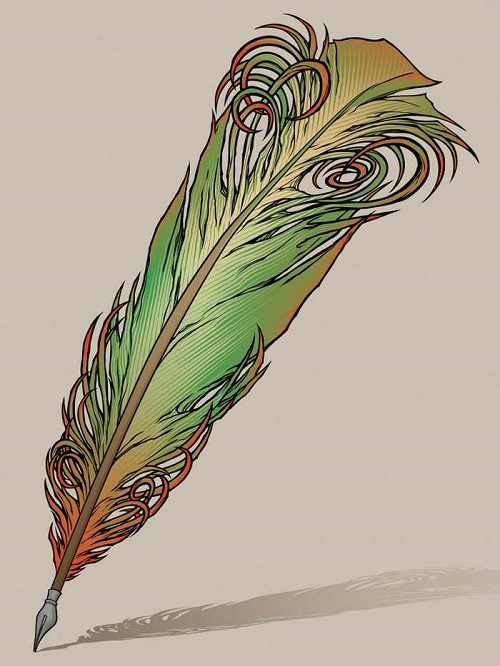FWP:
SETS
SOUND EFFECTS: {26,7}
WRITING: {7,3}
For background see S. R. Faruqi's choices. For more on Ghalib's unpublished verses, see the discussion in {4,8x}.
The 'welcoming of coquetry' could certainly refer, as Gyan Chand assumes, to the lover's eagerness to welcome the coming of the coquettish beloved. But thanks to the subtlety and flexibility of the i.zaafat , it could equally well refer to the welcome extended by coquetry-- that is, to the flirtatiousness of a beloved preparing a teasing or playful reception for the lover, as Asi assumes. Such a welcome could either consist of, or be illustrated by, the tendency of the lover's letter to equip itself with wings and feathers. For as a bird, endowed with the grace and beauty of flight, would the letter not be inclined to groom its feathers and preen itself?
But then why, and how, does the letter become a bird, why does it become the wings and feathers of the message? It's mostly this metamorphosis that Zamin finds so annoying. As Gyan Chand points out, a leaf of paper has physical and aerodynamic properties like those of a wing; it can float airily and playfully in the breeze. A 'message' is inert, perhaps even unwritten, perhaps even unspoken-- but once it has acquired the wings and feathers of a letter, it can be on its way, graceful, capable, and independent (thus perhaps coquettish). And the lover's vivid imagination sees the letter-bird as traveling fast and free, so that it won't be necessary to employ a bothersome and unreliable Messenger.
And such lovely sound effects! We have two sets of wings and feathers: istiqbaal and baal , and then par and parvaaz . There's also the rhyming of ;xaamah and naamah (echoed also by pai;Gaam ), and of naaz and pardaaz .
Compare the preeminent 'scratching of the pen' verse, {169,13}.

Asi:
The scratching of the pen (that sound that, when writing, emerges from the pen) is not the scratching of the pen. Rather, it's the pouring out and raining down of the welcome of coquetry. That is, coquetry itself sends a message of welcome in this way. So to speak, the letter itself becomes a wing of flight for the message. Because of this spreading out and openedness, the simile for the letter has been given as a wing of flight.
== Asi, p. 235